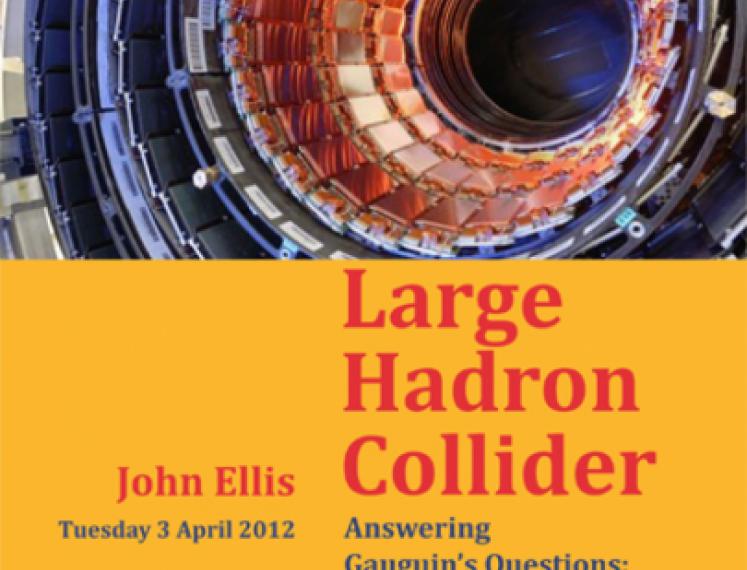Large Hadron Collider
Experiments at the Large Hadron Collider are addressing these questions. What are the prospects for finding answers?
Since the dawn of civilization, we have been trying to find the answer to some of the most fundamental questions concerning our existence. Perhaps most pressing is the question on the origin of the Universe and our world, and of the laws and building blocks of nature. Also, we have always yearned to know the fate of our world. For the first time in human history, we are able to find scientific answers to these questions. One of the most ambitious and largest scientific experiments ever, the Large Hadron
Collider at CERN in Geneva tries to address the most fundamental questions of physics and the cosmos. It investigates the structure of matter, and tries to find new insights into the history and fate of our Universe. This talk is inspired by Paul Gauguin's famous painting "What are we? Where do we come from? Where are we going?" and tries to answer these questions in the language of physics. Experiments at the Large Hadron Collider are addressing these questions. What are the prospects for finding answers?
Professor John Ellis obtained his PhD in Theoretical High Energy Physics at the University of Cambridge. In 1973 he started to work at CERN (Geneva), first as a Research Fellow, from 1974 as a Staff Member and from 1978 with an Indefinite Contract. In September 2010 he was appointed as a Clerk Maxwell Professor of Theoretical Physics at King's College (London). During his time at CERN he has hold many visiting/special professor positions all over the world. Prof. Ellis is a theoretical physicist with research interests in particle physics, astrophysics, cosmology and quantum gravity.
Most of his research has been directly related to experiment. He was involved in several monumental discoveries in high energy physics such as the discovery of the gluon in 1979. He predicted the mass of the bottom and top quarks. He wrote the first survey of possible LEP physics in 1976 and made the first survey of possible beyond the Standard Model physics at the LHC in 1984. He is the author of nearly 900 scientific papers. Prof. Ellis is widely recognized for his work. In 1985 he was elected Fellow of the Royal Society.
He obtained numerous honorary titles and several prizes such as the Dirac Medal and Prize of the Institute of Physics in 2005. He is an advisor to the CERN Director-General for relations with Non-Member States and as such has had frequent dealings with numerous partner countries of CERN.
Quantum Universe
This lecture is organized by Quantum Universe/QU2 workshop – a collaborative initiative of the Centre for Theoretical Physics (CTN), Kapteyn Institute and KVI (Kernfysisch Versneller Instituut) – in co-oparation with Studium Generale.
Interesting links
Wikipedia Large Hadron Collider
Official website Large Hadron Collider
New York Times Interview John Ellis
Organized in co-operation with Quantum Universe/QU2 workshop



